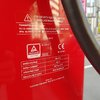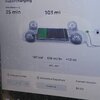So the Model 3 and Y LR can charge at up to 250 kW, while having only ~75 kWh battery capacity. Just assuming the same C-rate, a 100 kWh battery (current S/X capacity) could charge at ~330 kW. It's hard to believe that Tesla will let the charging rate of their less expensive vehicles (3/Y) exceed that of the S/X for very much longer. Also, in the next 1-2 years, Tesla will release the Cybertruck and Roadster, which will presumably have even larger capacity, enabling an even higher potential charge rate.
It doesn't seem to make much sense that Tesla would switch to a "V4" supercharger anytime soon, because they're just getting started in V3 rollout. It seems to make more sense that they may have baked in extra capacity in V3 superchargers, but don't yet have the vehicles to utilize it. After all, it wouldn't make any sense for Tesla to advertise that the V3 chargers are capable of 350 kW (or whatever) if no vehicle can actually charge at that. V2 chargers in the past received a relatively modest bump via software from 120->150 kW. Do we have any data to suggest whether V3 superchargers might ultimately be capable of higher speeds, and what this theoretical max might be?
I believe Elon once referred to 350 kW charging (related to the Porche Taycan) as a mere child's toy, so perhaps 250 kW won't be Tesla's max rate for long. Perhaps we'll find out more at Battery day...
It doesn't seem to make much sense that Tesla would switch to a "V4" supercharger anytime soon, because they're just getting started in V3 rollout. It seems to make more sense that they may have baked in extra capacity in V3 superchargers, but don't yet have the vehicles to utilize it. After all, it wouldn't make any sense for Tesla to advertise that the V3 chargers are capable of 350 kW (or whatever) if no vehicle can actually charge at that. V2 chargers in the past received a relatively modest bump via software from 120->150 kW. Do we have any data to suggest whether V3 superchargers might ultimately be capable of higher speeds, and what this theoretical max might be?
I believe Elon once referred to 350 kW charging (related to the Porche Taycan) as a mere child's toy, so perhaps 250 kW won't be Tesla's max rate for long. Perhaps we'll find out more at Battery day...




